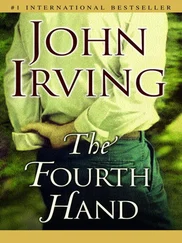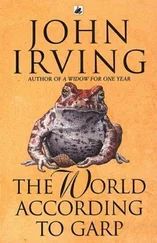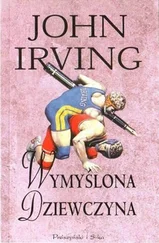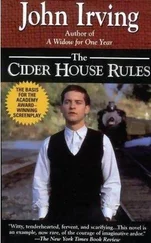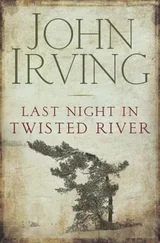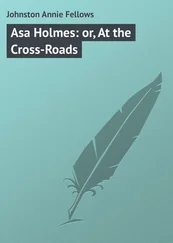More than the movies, he’d watched the audience eating their snacks. In the 1950s and ’60s, the masala recipe was working—not only in Bombay but throughout South and Southeast Asia and the Middle East, and even in the Soviet Union. There was music mixed with murder, sob stories intercut with slapstick, mayhem in tandem with the most maudlin sentimentality—and, above all, the satisfying violence that occurs whenever the forces of good confront and punish the forces of evil. There were gods, too; they helped the heroes. But Dr. Daruwalla didn’t believe in the usual gods; when he started writing, he’d just recently become a convert to Christianity. To that Hindi hodgepodge which was the Bombay cinema, the doctor added his tough-guy voice-over and Dhar’s antiheroic sneer. Farrokh would wisely leave his newfound Christianity out of the picture.
He’d followed Danny Mills’s recommendations to the letter. He selected a director he liked. Balraj Gupta was a young man with a less heavy hand than most—he had an almost self-mocking manner—and more important, he was not such a well-known director that Dr. Daruwalla couldn’t bully him a little. The deal was as Danny Mills had said a deal should be, including the doctor’s choice of the young, unknown actor who would play Inspector Dhar. John Daruwalla was 22.
Farrokh’s first effort to pass off the young man as an Anglo-Indian wasn’t at all convincing to Balraj Gupta. “He looks like some kind of European to me,” the director complained, “but his Hindi is the real thing, I guess.” And after the success of the first Inspector Dhar movie, Balraj Gupta would never dream of interfering with the orthopedist (from Canada!) who’d given Bombay its most hated antihero.
The first movie was called Inspector Dhar and the Hanging Mali . This was more than 20 years after a real gardener had been found hanging from a neem tree on old Ridge Road in Malabar Hill, a posh part of town for anyone to be hanged in. The mali was a Muslim who’d just been dismissed from tending the gardens of several Malabar Hill residents; he’d been accused of stealing, but the charge had never been proven and there were those who claimed that the real-life gardener had been fired because of his extremist views. The mali was said to be furious about the closing of the Mosque of Babar.
Although Farrokh fictionalized the mail’s story 20 years after the little-known facts of the case, Inspector Dhar and the Hanging Mali wasn’t viewed as a period piece. For one thing, the 16th-century Babri mosque was still in dispute. The Hindus still wanted their idols to remain in the mosque in honor of the birthplace of Rama. The Muslims still wanted the idols removed. In the late 1960s, very much in keeping with the language of that time, the Muslims said they wanted to “liberate” the Mosque of Babar—whereas it was the birthplace of Rama that the Hindus said they wanted to liberate.
In the movie, Inspector Dhar sought to keep the peace. And, of course, this was impossible. The essence of an Inspector Dhar movie was that violence could be relied upon to erupt around him. Among the earliest of the victims was Inspector Dhar’s wife! Yes, he was married in the first movie, albeit briefly; the car-bomb death of his wife apparently justified his sexual licentiousness for the rest of the movie—and for all the other Inspector Dhar movies to come. And everyone was supposed to believe that this all-white Dhar was a Hindu. He’s seen lighting his wife’s cremation fire; he’s seen wearing the traditional dhoti, with his head traditionally shaved. All during the course of the first movie, his hair is growing back. Other women rub the stubble, as if in the most profound respect for his late wife. His status as a widower gains him great sympathy and lots of women—a very Western idea, and very offensive.
To begin with, both Hindus and Muslims were offended. Widowers were offended, not to mention widows and gardeners. And from the very first Inspector Dhar movie, policemen were offended. The misfortune of the real-life hanging mali had never been explained. The crime—that is, if it was a crime, if the gardener hadn’t hanged himself—was never solved.
In the movie, the audience is offered three versions of the hanging, each one a perfect solution. Thus the unfortunate mali is hanged three times, and each hanging offended some group. Muslims were angry that Muslim fanatics were blamed for hanging the gardener. Hindus were outraged that Hindu fundamentalists were blamed for hanging the gardener; and Sikhs were incensed that Sikh extremists were blamed for hanging the gardener, as a means of setting Muslims and Hindus against each other. The Sikhs were also offended because every time there’s a taxi in the movie, it’s driven wildly and aggressively by someone who’s perceived to be a crazed Sikh.
But the film was terribly funny! Dr. Daruwalla had thought.
In the darkness of the Ladies’ Garden, Farrokh reconsidered. Inspector Dhar and the Hanging Mali might have been terribly funny to Canadians , he imagined—with the notable exception of Canadian gardeners. But Canadians had never seen the film, except those former Bombayites who lived in Toronto; they’d watched all the Inspector Dhar movies on videocassettes, and even they were offended. Inspector Dhar himself had never found his films especially funny. And when Dr. Daruwalla had questioned Balraj Gupta concerning the comic (or at least satiric) nature of the Inspector Dhar movies, the director had responded in a most offhand manner. “They make lots of lakhs!” the director had said. “Now that’s funny!”
But it was no longer funny to Farrokh.
What if Mrs. Dogar Was a Hijra?
In the first darkness of the evening, the Duckworthians with small children had begun to occupy the tables in the Ladies’ Garden. The children enjoyed eating outdoors, but not even their enthusiastic high-pitched voices disturbed Farrokh’s journey into the past. Mr. Sethna disapproved of all small children—he especially disapproved of eating with them—but he nevertheless considered it his duty to oversee Dr. Daruwalla’s state of mind in the Ladies’ Garden.
Mr. Sethna had seen Dhar leave with the dwarf, but when Vinod returned to the Duckworth Club—the steward assumed that the nasty-looking midget was simply making his taxi available to Dr. Daruwalla, too—the dwarf hadn’t waddled in and out of the foyer, as usual; Vinod had gone into the Sports Shop, where the dwarf was on friendly terms with the ball boys and the racquet stringers. Vinod had become their favorite scavenger. Mr. Sethna disapproved of scavenging and of dwarfs; the steward thought dwarfs were disgusting. As for the ball boys and the racquet stringers, they thought Vinod was cute.
If the film press was at first being facetious when they referred to Vinod as “Inspector Dhar’s dwarf bodyguard”—they also called the dwarf “Dhar’s thug chauffeur”—Vinod took his reputation seriously. The dwarf was always well armed, and his weapons of choice were both legal and easily concealed in his taxi. Vinod collected squash-racquet handles from the racquet stringers at the Duckworth Sports Shop. When a racquet head was broken, a stringer sawed the head off and sanded down the stump until it was smooth; the remaining squash-racquet handle was of the right length and weight for a dwarf, and the wood was very hard. Vinod wanted only wooden racquet handles, which were becoming scarce. But the dwarf hoarded them; and the way he used them, he rarely broke one. He would jab or strike with only one racquet handle—he would go for the balls or the knees, or both—while he held the other handle out of reach. Invariably, the man under attack would grab hold of the offending racquet handle; thereupon Vinod would bring the other handle down on the man’s wrist.
Читать дальше


